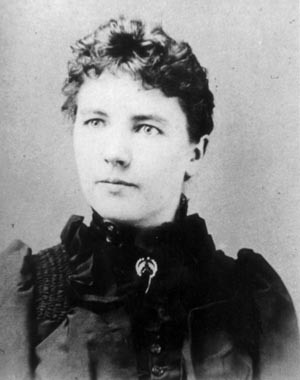Summary of Books of (The New Testament)
By: Randy Jones
Matthew: The book of Matthew is a great introduction to the heart of Christian teachings. Matthew introduces several historical narratives from the Old Testament to prove that Jesus is the promised Messiah. More than any of the other Gospels, Matthew uses the OT to clearly show that Jesus fulfilled the words of the OT prophets. Matthew explains in great detail the lineage from King David to Christ the Messiah, he is set on showing the Jewish people the love that Christ has for them. Though the Pharisees and Sadducees wanted their own Messiah, Matthew intended to show through his recordings such as the Sermon on the Mount, and a collection of parables spoken by Jesus, as well as the arrest, crucifixion, and resurrection of Christ, that Jesus was the true prophesied Messiah for the Jewish people.
Mark: The book of Mark is more of a narrative, to not only the Jewish people but as well to the Gentiles. Because Mark had more of a Gentile audience, there is not a lot of genealogy concerning Christ as this would not be as interesting to the Gentiles as it would for the Jewish people. Mark is more of a fast paced gospel, starting with the recording of Christ’s baptism, then moving onto His ministry in Galilee, as well as the calling of the first four of twelve disciples, after this is the recording of the life, death and resurrection of Christ. Jesus himself uses OT narratives in a few passages in Mark, for example,
- Mark 7:6, Jesus rebukes the Pharisees for fake worship.
- Mark 14:27, Jesus refers to his disciples being scattered like sheep (in reference to after his arrest.
- Mark 11:15-17 As He cleared the temple of the money chargers.
The book of Mark shows us Jesus as the suffering servant of God, who was sent to show us a ministry and be a sacrifice for us.
Luke: Known historically to be one of the most beautiful books ever written, Luke gives us a Gentile’s view on the life of Christ. The book of Luke is in better chronological order pertaining to the life of Christ in comparison to the other Gospels. His accounts start with a brief insight to the parents of Jesus, the birth of His cousin, John The Baptist, later the journey of Mary and Joseph to Bethlehem, where the birth of Jesus took place, and a genealogical record of Jesus through His mother, Mary. Luke also records some of the more narrative stories of Jesus, displaying His love and compassion for forgiveness, such as The Prodigal Son, The Rich Man and Lazarus, and The Good Samaritan.
Page 1
John: The book of John illustrates a unique narrative of Christ like none of the other Gospels. John does not introduce us to Christ from the birth, but rather he records him as the ” beginning” and “The Word”, by doing this, he places Christ at the very beginning of creation (John 1: 1-14). The message of John was not that the kingdom of Heaven was at hand, rather that The Messiah was coming soon, not to pass judgment but to give redemption and that John was only preparing the way. John has a more theological tone to his writings than any of the four gospels. In the book of John we see where Jesus angers many of the Jewish leaders by His corrections toward them, as well as healing on the Sabbath, and claiming to have powers that the Jewish people only reserved for God. John illustrates Jesus as being the God of The Old Testament, He does this best by the seven statements beginning with “I am” as spoke by Jesus.
Acts: The book of Acts shows the reader the history of the Christian church, as well as the spreading of the Gospel and the continues opposition to it. Acts introduces the reader to a man named Paul, who could only be described as one of the greatest success stories of the NT. The conversion of Paul on the road to Damascus, changed him from a hardline prosecutor of Christians to bringing him face to spirit with Jesus. The experience resulted in Paul becoming a great evangelist of the Gospel of Christ. Another conversion shown in Acts would be the function of The Holy Spirit, generally seen in the OT as an external anointing to the followers of God, now after the resurrection of Jesus, The Holy Spirit is now in the heart of every believer, as shown in Acts on the “Day of Pentecost”, and through the miracles of Peter, John, and Paul. Acts serves as a narrative record of Paul as he condemned the church, to his conversion and immediate love and desire for the church and ministry of Christ, to his trial and death for the ministry of Christ.
Romans: The main theme in Paul’s epistle in Romans would be righteousness, as Paul proclaims his desire to preach the gospel to those at Rome. The book of Romans is a narrative book of who God is and what He has done, and tells us of Jesus Christ and what His death accomplished to all sinners in bringing new hope. Paul’s epistle in Romans was written in Corinth prior to him leaving and would serve as his introduction prior to his arrival in Rome, as we read though this would be prolonged as he was arrested in Jerusalem and finally brought to Rome as a prisoner. There are genre’s shown in Paul’s letter in Romans as the book of Romans can be divided into four sections:
- The need for righteousness
- The provision of righteousness
- The vindication of righteousness
- The practice of righteousness
Among Paul’s condemnations of sin here we clearly see that his ministry was still one of passion in spreading the gospel of Christ to all those who would receive it.
Page 2
1 Corinthians: Paul’s letter to the Church at Corinth was to address the divisions occurring with in the church itself. The members were dividing themselves to different groups, breaking the unity of the church that Paul had worked so hard to create. The church was facing several issues pertaining to sexual immorality as well as pressing charges against each other. Paul commands the church to get rid of those causing the wickedness within the church and he even uses an Old Testament narrative pertaining to the children of Israel wondering in the desert as a relation to the church and their miss use of spiritual freedom. The book of 1 Corinthians is well organized to answer the questions of the church regarding improper conduct and errors in judgment to the beliefs the church had excepted. Paul’s letter contained instructions on, marriage, celibacy, Christian freedom, the veiling of woman, and the sacrifices to idols.
2 Corinthians: In Paul’s second letter to the church at Corinth he expresses his joy that they received his letter in a positive manner as sent to him buy Titus, and they had repented for their sins and rebellion against Paul. Paul had found himself confronted with genres of miss trust within the church as they questioned his apostleship and his authority to teach and lead the people at Corinth. These issues were formed as bad apostles tried to discredit Paul’s ability to speak and his unwillingness to accept support from the church. Paul sought to vindicate his apostleship. Paul ends his letter by emphasizing his authority and his concern for their faithfulness for him in the sight of the adversities with the false apostles. He is upset with himself for having to boast of his qualifications and his suffering for Christ.
Galatians: Paul’s letter in Galatians was not an essay on contemporary history, it was more of a protest against the corruption of the gospel of Christ. The churches at Galatia were formed of partly converted Jews and Gentiles. Paul has confirmed his apostolic character along with the doctrines he taught, so that he could confirm the churches at Galatia with the faith in Christ. Paul mentions faith several times in his letter to emphasize the justification of faith alone. In this epistle Paul points out that men are justified by faith without the works of the Law of Moses, but this was being obscured by the Judaizers as they were causing alienation within the churches. Paul pleads with the churches to stand fast in their freedom and not to fall to the yoke of bondage or (Mosaic Law).
Ephesians: Paul’s narrative in The Book of Ephesians is to help discipline the church into children of God, and to fulfill their purpose and calling that God has given them.
Paul instructs with his letter, that they should know and understand who God has declared them to be. He also encourages them to strengthen their daily walk with God so they will not stagger in and out of false doctrines. Paul also makes reference to OT doctrine as to the equality of the Gentiles with the Jews into the Promise of God (or body of Christ). Paul’s main set accomplishment for this letter is to, show to the church in order to live out the will of God in their lives, they must first understand who they are in Christ.
Page 3
- Philippians: Philippians is probably the happiest letter Paul writes out of his collection of epistles, and what makes it so inspirational is he is writing while he is a prisoner of Nero in Rome. Paul shows his happiness with using words such as, joy, and rejoice as well as lifting up the name of Christ while he is still imprisoned. As in most of Paul’s letters, he warns the church at Philippi against legalism from the Judaizers, whom he referenced to as “dogs” and “men who do evil”. The letter Paul sent to Philippi can be broken up into four joyful sections.
- (1) Rejoicing in the middle of suffering, 1:8-30.
- (2) Rejoicing in lowly service, 2:1-30.
- (3) As a Child of Christ, keep our Faith, 3:1-21.
- (4) Our strength is, Rejoicing through anxiety, 4:1-9.
Philippians can pretty much be summed up as, a declaration of happiness and rejoice in the middle of our darkest hours.
Colossians: The theme in Colossians as with most of Paul’s letters is, (Christ will supply our needs in all areas of our lives). In his letter to Colosse, Paul again is dealing with the visible signs of heresy invading the church. As well the Judaizers were trying to incorporate the OT law of circumcision into the new faith of the Jewish converts. Paul countered this in (Colossians 2:11-15), by stating that the new circumcision was one of the heart and no longer one of the flesh. Paul’s primry objective through this letter is to show the sufficiency of Christ in our everyday walk and speech as well as the way we treat others.
1 Thessalonians: In this letter Paul first indicates his desire to visit the church at Thessalonica and explains how Satan had stopped them. His second purpose was two fold, he encouraged the church to be steadfast in their persecutions, and reassured all those in the church that those who have died in Christ will also return to Heaven with him when he comes back. Paul made these points mainly due to the fact that the Thessalonians were being persecuted primarily by their own country men, who were Jews that had not accepted the new Messiah. Paul also reassured the people that the persecutions they were enduring was the same as the prophets of the OT.
2 Thessalonians: Paul again in his second letter to Thessalonica is confronted with the peoples misconception of The Coming of Christ. Many were convinced that The Day of The Lord had already happened, so they stopped their works, and Paul wanted to clear these misconceptions up. Paul started his letter with praise to the people for their accomplishments and commends them for their works in The Lord. Paul’s does this for the purpose of showing Christ’ love for those in His service, Paul realizes that condemning the actions of those being mislead would only cause them to alienate themselves further from the will of God do to the current persecutions they were receiving. Paul continuously shows the love of Christ through his words of encouragement.
Page 4
1 Timothy: This is the first letter Paul had written to Timothy, he was a young pastor who had help Paul in his work. Paul was more than just a mentor to Timothy, he was more like a father to him and Timothy was like a son unto Paul. Paul starts his letter by telling Timothy to be on guard against false teachers and false doctrines. Paul write on to explain to Timothy the duties of the pastor and his responsibility to the members of the church, such as the single members, widows, elders, and slaves. Paul reiterates throughout his letter for Timothy to stand strong of the faith of Christ and to worship unwavering and to develop good leaders for the church and to always be true to his calling.
2 Timothy: Paul was again in prison in Rome, where he was feeling lonely and abandoned. Paul was feeling that his time on earth was most likely ending soon. This letter in 2 Timothy is considered to be Paul’s “last words”. Even though Paul is facing definite execution, he uses his last words to encourage Timothy and the believers to continue spreading the gospel of Christ and to stand fast in faith against any persecution, he also reminds Timothy to remain firm in sound doctrine and to avoid ungodly beliefs and practices. Paul tells of upcoming persecution toward all believers toward the end times, and makes a plea to stand and finish the race strong.
Titus: In the book of Titus we see that Paul has left Titus, his brother in Christ in charge of the church he established in Crete. Paul’s letter was another of instruction towards the pastoral duties of his chosen head of the church. The letter also advises Titus as to what to look for in a leader of the church, and warns him about the natives of Crete. Paul instructed Titus to continue his discipleship by returning to Nicopolis for a visit. As seen in the other letters of Paul, he yet again addresses the the Judaizers who continue to cause problems around the church by rebelling and claiming circumcision to the church. In his letter ti Titus we can see now that Paul has had enough and goes a step further to say their mouths must be stopped. (Titus 1:10-11).
Philemon: The letter to Philemon is the shortest writing of Paul in the New Testament, and the letter deals primarily with the practice of slavery. Paul at the time was still in prison and Philemon was a slave owner, who had heard the ministry of Paul and started a church in his house. The letter speaks of a slave named Onesimus who had met Paul in Rome and became a Christian, yet he had stolen from his master Philemon and was afraid of returning since the law meant death to a run away slave. In Paul’s letter, he speaks of the conversion of Onesimus and asked Philemon to accept him as a brother in Christ not just as a slave. Paul did not condemn slavery but he presented Onesimus as a brother in Christ, not as a slave.
Page 5
Hebrews: The Authorship of Hebrews is somewhat of a question since it does not hold the general salutations of Paul’s other letters, it is possible due to the eye witness accounts that Luke may have possibly been the author. Hebrews shows that many of the believers were slipping back into practicing Judaism, in part due to the constant persecution. One could say The book of Hebrews serves as a call to those suffering persecution to continue in Christ. The book of Hebrews can be related to 3 seperate groups of people.
- The first would be those who believe in Christ.
- The second would be those unbelievers who had actual proof of Christ.
- The third would be those unbelievers who rejected Christ.
The Book of Hebrews compares OT narratives to Judaisum sacrifices, only to show that there is no comparison to the final sacrifice Christ made for all. Hebrews gives us as believers much encouragement, but at the same time issues a few warnings as well, such as spiritual neglect, the danger of unbelief, spiritual immaturity, failing to endure, and refusing God.
James: The Book of James is dedicated to Jewish Christians scattered across the nations, to encourage them to keep growing in their new Christian faith. The book of James is a challenge to true followers of Christ, because he it tells us what Paul has mentioned many times in the epistles, that Christians can not be as Christ needs them by works alone, but also have faith. This epistle also puts to rest the idea that a Christian can claim Christ but still live in sin. Such a faith, James claims in (James 2:19) is shared by the demons who “believe and tremble”. So the narratives show us here within the epistle that works without faith are dead.
1 Peter: 1 Peter is a letter from Peter to the believers who had been scattered throughout the land and were under sever persecutions. Peter writes this epistle with first hand experience on persecution, because he had been beaten, threatened, and jailed for preaching the gospel. Peter knew what to say through his letter to those giving up hope, because he knew of the power of faith through the bitter times of his persecution. Peter had a very good working knowledge of OT passages as he spoke in comparison to Holiness and keeping the law, (Leviticus 11:44) and also explains “the Cornerstone” from (Isaiah 28:16) and (Psalms 118:22), and how Christ was rejected of the Jews through disobedience and unbelief. He did this so those suffering persecution would know that they would be rewarded.
2 Peter: The second book of Peter shows us that Peter himself being a prisoner in Rome under Nero has come to the realism that his time left with his brethren is drawing to a close. In this letter Peter reaches out to his readers, he knows the church is in danger and he challenges his readers to be more mature in their faith. Peter explained the need for them to be strong in their knowledge of Christ and he gave things to look for in the false teachers who were embedding themselves within the churches. Peter taught to them that the second coming of Christ would be their incentive for Holy living.
Page 6
1 John: The letter of John here is one of basic faith in Christ, and it is to help the readers take an honest look at their faith. John also wrote this letter to confirm the identity of Christ, as some of the churches had fallen to false teachers, teaching their own views and ideas. John made the believer stand back and take a look at themselves in a personal relation with Christ and between one another. John told the people a way they could tell if they had the love of Christ toward each other, this was by their actions. John explained to them that they were not perfect and recognized that as believers this included admission of their sins and seeking God’s forgiveness.
2 John: The book of 2 John was written to “the chosen lady and her children”, this could have been possibly an important lady in high standing with the church, or a code to reference the church and her congregation. John sent a warning concerning those who were not teaching the correct doctrine of Christ. The false teachings pertained to the resurrection of Christ being only in spirit and not in the flesh. John wanted to make all the believers aware of these false teachers and to keep their distance from them and to stay stead fast in their knowledge of Christ.
3 John: John’s purpose of this third epistle would be three fold, first he writes to encourage his co-worker, Gaius for his hospitality in helping the traveling ministers, and second he indirectly condemns the behavior of Diotrephes, a leader who had taken over one of the churches in Asia, and opposed the apostle and all his gospel stood for. Third, he commended the example of Demetrius reported as having a good testimony for all. Here John pointed to a couple of main topics to the believers. These are hospitality, and encouragement and support to our fellow brethren traveling to spread the gospel.
Jude: The book of Jude is made to be as a modern reference of apostasy to the readers. Jude is the brother of James, which makes him a step brother to Jesus. The book of Jude was written for the end of the church age, which started at the Day of Pentecost. Jude writes that evil in the church is evidence of the apostasy and with the false prophets that have come into the church, the saints were in danger. The book of Jude starts on a narrative of salvation but takes a turn in chapter 3 to be more directive towards contending for the faith. The book of Jude is filled with several OT references such as, The Exodus, Satan’s rebellion, Sodom and Gomorrah, the death of Moses and many more. Jude uses these illustrations to remind the Jewish Christians of true faith and obedience.
Page 7
Revelation: The book of Revelation was given to John by God, to show his servants what will soon take place. It is the final warning that the world will end in judgment, and gives us a small look at Heaven and all that awaits for those who have a robe of white. Revelation takes us on a walk through the end times to come, from “The Great Tribulation” to the down fall of Satan and his angels into the fiery pit. The Revelation begins with letters to the seven churches of Asia Minor, then reveals the devastation which will be poured out on the world such as, the mark of the beast, “666”, the battle of Armageddon, the fall of Satan, the reign of Christ, and The Great White Throne Judgment. Just a John saw these, just like us his mind could not comprehend all the unveiling that God had shown him. John tells us of many things to watch for, ranging from our world to our Christian lives inside the church. He reminds us to stay grounded in the Word of God so that we will not fall to the end. As his last request, he prays for The Lord to come quickly, with this he means bring us to our reward.
Ref: The Thompson Chain-Reference Bible KJV
B.B. Kirkbride Bible Company, INC.
Previous Editions, Copyright 1908, 1917, 1929, 1934, 1957, 1964




